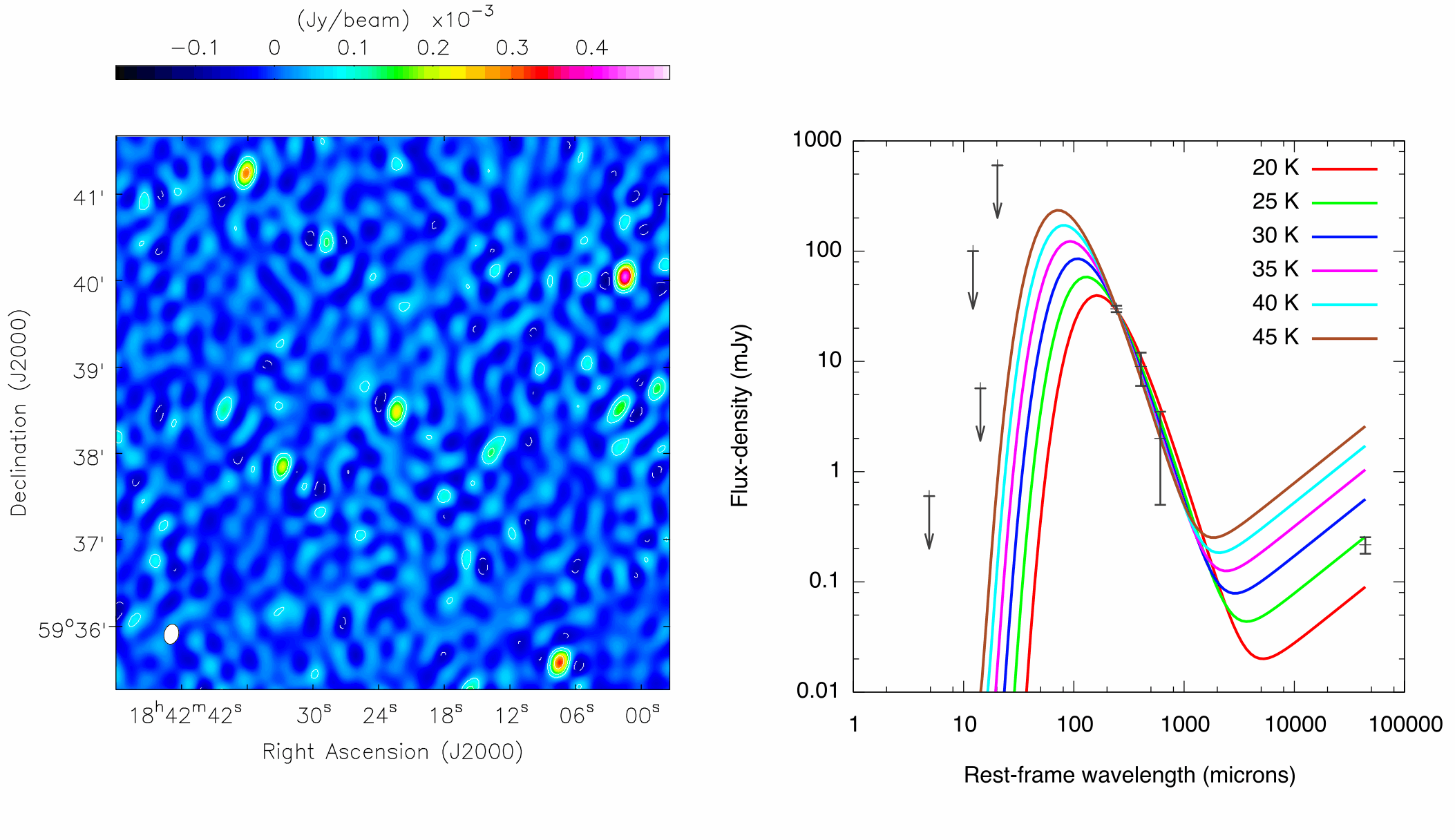Daily Image
10-06-2011Gravitational lensing of a bright submillimetre galaxy
| Submitter: | John McKean |
| Description: | Submillimetre bright galaxies are a special class of high redshift objects that have large amounts of dust and are often found to have huge star formation rates (~400 solar masses per year). Radio continuum observations can be used to detect the emission from the star-formation processes within these galaxies by seeing the action that is otherwise obscured by dust. This technique was recently applied to the bright submillimetre galaxy MM 18423+5938 at redshift 3.9296, which is the most distant submillimetre galaxy that is also gravitationally lensed. The WSRT observations at 1.4 GHz are shown on the left, detecting the faint radio emission from the distant galaxy in the centre. Based on these data, the total IR luminosity of the galaxy was calculated and the star formation rate was estimated to be ~9400 / m solar masses per year (where m is the lensing magnification; typically ~10-30). Using the radio data, the temperature of the dust within the galaxy was found to be ~25 K, as shown on the right. The radio data from the WSRT were important to differentiate between various dust models. It seems that this galaxy has a lower dust temperature than compared to typical submillimetre galaxies at redshift ~2 (T ~ 35 K). These observations are also an excellent example of what can be achieved with the all-sky surveys to be carried out with APERTIF. The advantage of also using lensing for this work is that we will be able to study much lower star-formation rate galaxies than would otherwise be possible. The results from this work were reported by McKean et al. (2011, MNRAS, 414, L11). The team also included ASTRON/JIVE astronomers Alicia Berciano Alba, Valeriu Tudose, Michael Garrett and Zsolt Paragi. |
| Copyright: | John McKean |
| Tweet |  |
